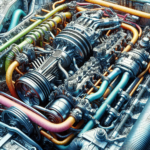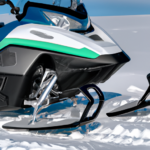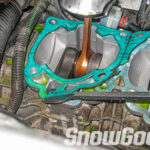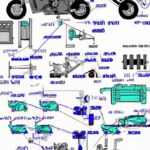Understanding how hot a snowmobile exhaust can get is essential to both your safety and the performance maintenance of your ride. Snowmobiles are designed to withstand extreme winter conditions, but their complex engine systems generate substantial heat, particularly at the exhaust pipe. This article provides insights into the average operating temperature of a snowmobile exhaust and its potential impact on your snowmobile’s efficiency and reliability. Stay safe and keep your snowmobile at its best by discovering the science behind this cold-weather machine’s piping hot core.

Understanding the Basics of a Snowmobile Engine
Engines propel all vehicles and snowmobiles are no exception. Yet the engines in snowmobiles are a bit different and have their unique features. It’s crucial for you to understand all parts that function together in harmony to propel your snowmobile at high speeds through the snow.
The role of combustion
Understanding the role of combustion in a snowmobile engine is pretty simple. It all starts when you ignite the fuel, it burns and generates power, which is why it’s called combustion. This power is then used to move the engine’s pistons, which then move the drive shaft and eventually the snowmobile’s tracks.
Basic design of a snowmobile engine
Snowmobile engines are typically small, lightweight, and designed for quick acceleration rather than top speed. They often have cylinders aligned in either a vertical or horizontal orientation, something which is distinctive from most traditional car engines. These designs help in keeping the weight to a minimum which is great for power-to-weight ratio and also helps in maintaining the balance and handling of the snowmobile.
Purpose of the exhaust system
The exhaust system may seem to be doing a nondescript job, but it is essential to the overall operation of the snowmobile. Main functions of an exhaust system are to direct exhaust gases out of the cylinder, to quiet the sound made by the exhaust gases and to aid in optimizing engine performance.
Factors Determining Snowmobile Exhaust Temperature
From the engine’s design to the type of fuel used, various factors determine the exhaust temperature in a snowmobile which ranges from several hundred to a couple of thousand degrees Fahrenheit.
Engine Design
The design of your snowmobile’s engine plays a significant role in determining exhaust temperatures. Different designs interact with fuel and air differently, leading to varying levels of heat generation and dissipation.
Fuel Type
The type of fuel you use also affects exhaust temperature. Higher octane fuels burn hotter and thereby increase exhaust temperatures. While they boost performance, they can also make the machine run hotter.
Weather conditions
Weather conditions such as ambient temperature and wind speed can significantly influence exhaust temperatures. On colder days, the exhaust is likely to run cooler as the surrounding air cools the exhaust gases rapidly.
Engine load and snowmobile speed
The amount of load on the engine and how fast you’re traveling also impact the exhaust temperatures. More weight or higher speeds lead to more power demands from the engine, and more power translated into more heat.
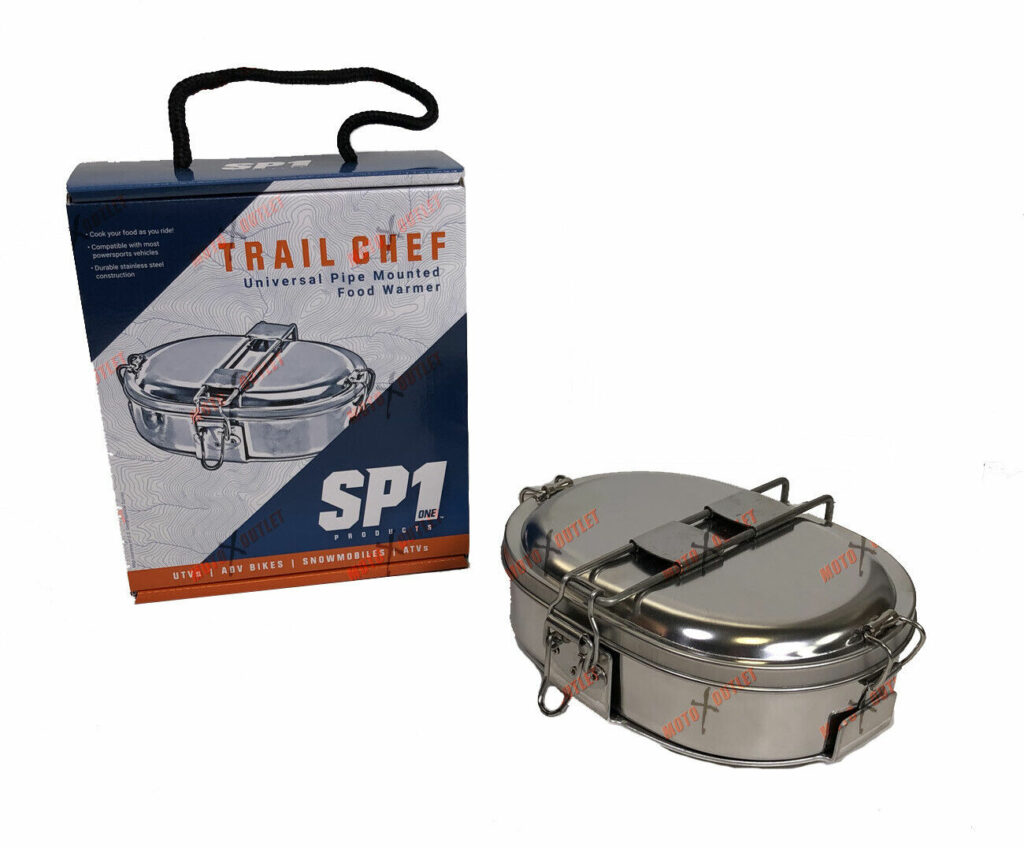
Average Temperature Ranges for Snowmobile Exhaust
Temperature immediately following combustion
Immediately following combustion, the temperature of exhaust gases inside a cylinder can reach up to 1200-1300 degrees Fahrenheit.
Temperature at the exhaust manifold
From here, gases move to the exhaust manifold, where the temperatures average around 850-1200 degrees Fahrenheit, depending on the load on the engine and other factors.
Temperature at the tailpipe
By the time exhaust gases reach the tailpipe, they have cooled down significantly, with temperatures ranging between 300 and 500 degrees Fahrenheit.
Effects of High Exhaust Temperature on Snowmobile Performance
High exhaust temperatures can negatively impact snowmobile performance and overall health of the sled.
Engine wear and tear
With high temperatures, engine components can wear out faster, leading to increased maintenance costs and a shorter engine life.
Impacts on speed and efficiency
Heat can also impact speed and efficiency. Excessive heat could mean incomplete combustion, robbing your snowmobile of power and speed while reducing fuel efficiency.
Potential for overheating and damage
If exhaust temperatures get too high, they can lead to overheating. This can not only damage the engine but could also damage other components in close proximity, possibly leading to a catastrophic failure.
Safety Concerns with High Snowmobile Exhaust Temperatures
Safety is paramount, and high exhaust temperatures can pose risks that you should be wary of while operating a snowmobile.
Risk of burns
A significant risk with high exhaust temperatures is the potential for burns. This can occur when you accidentally touch hot parts of the exhaust system, such as the manifold or tailpipe.
Potential for setting fire to nearby materials
Exhaust systems at high temperatures can ignite flammable materials. Therefore, it’s crucial to ensure your snowmobile is clear of any potentially flammable items.
Effects on snow and ice surfaces
Similarly, excessively high exhaust temperatures can also lead to the melting of ice and snow surfaces, possibly creating unsafe conditions.
How to Measure Snowmobile Exhaust Temperature
Knowing the exhaust temperature can provide insights into your snowmobile’s health and performance.
Using an infrared thermometer
An infrared thermometer allows you to get a reading without making direct contact, making it safe and convenient to use.
Utilising an exhaust gas temperature gauge
Installing an exhaust gas temperature gauge can provide real-time temperature readings, keeping you updated on the internal happenings of your engine.
Noticing symptoms of high exhaust temperature
Check for signs of overheating, such as an unusually high running temperature, loss of power, or the smell of burning oil.
Methods to Lower Snowmobile Exhaust Temperatures
It’s possible to lower exhaust temperatures through a few simple steps, improving performance and engine longevity.
Ensuring proper engine maintenance
Routine maintenance can ensure your engine is in good working condition, which can reduce heat production.
Using proper fuel and oil mixtures
Using the correct fuel-oil mixture can improve combustion efficiency and lower exhaust temperatures.
Avoiding continuous high speeds
Continuous high speeds cause the engine to work harder which generates more heat. Reducing speed periodically can save you from soaring exhaust temperatures.
Relation Between Snowmobile Exhaust Temperature and Environmental Impact
Ride responsibly. Understand how high exhaust temperatures can impact not just your engine, but also the surrounding environment.
Emissions and pollution
Higher exhaust temperatures lead to increased amount of particulate matter and harmful emissions, contributing to pollution.
Effect on snow and ice
High exhaust temperatures can accelerate the melting of snow and ice, negatively affecting icy landscapes and ecosystems.
Noise pollution concerns
Loud exhaust sounds can contribute to noise pollution, disrupting outdoor tranquility and potentially affecting wildlife.
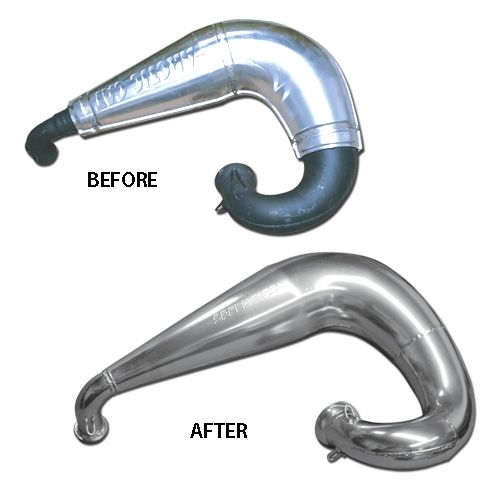
Modifications Affecting Snowmobile Exhaust Temperature
Modifying a snowmobile can impact the exhaust temperature, often in unpredictable ways.
Performance-enhancing modifications
Modifications intended to boost power could lead to a hotter exhaust as the engine will be burning fuel at a higher rate.
Exhaust system modifications
Changes to the exhaust system might affect its functioning, potentially leading to an increase in exhaust temperature.
Effects of modifications on exhaust temperature
Regardless of the nature of the modification, any changes to the engine or exhaust system could potentially change exhaust temperatures—sometimes dramatically so.
Common Myths and Misconceptions about Snowmobile Exhaust Temperature
When it comes to exhaust temperature, there are a fair number of myths and misconceptions.
Snow cools down the exhaust system
While snow can cool parts of the exhaust system to some extent, it doesn’t mean the system will run cool enough.
All snowmobiles operate at the same exhaust temperature
Exhaust temperatures depend on multiple variables, including engine design, fuel type, and riding conditions. Thus, different snowmobile models can have very different operating temperatures.
Overheating is not possible in cold weather
Even in freezing temperatures, overheating is a real concern due to heat generated by the engine and friction.
- What Snowboard Bindings Should I Get? - January 23, 2024
- What Size Screws For Snowboard Bindings? - January 23, 2024
- How To Snowmobile On Water? - January 23, 2024

